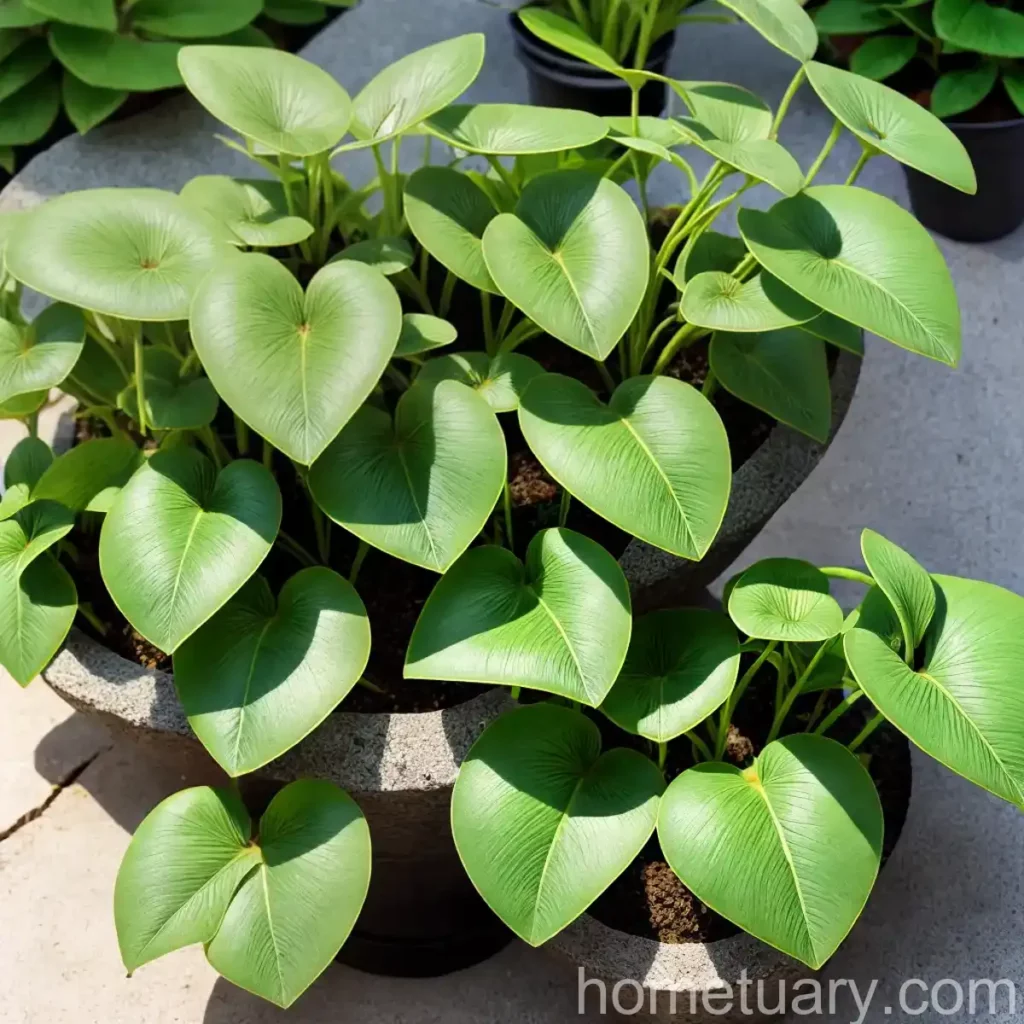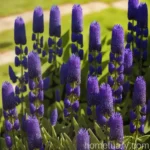Mazus (Mazus reptans): A Versatile, Low-Maintenance Ground Cover Plant
In the realm of plant diversity, Mazus reptans stands out as an excellent choice for gardeners seeking a low-maintenance, versatile ground cover plant. This article will delve into the various aspects of this plant, including its cultivation, uses, care requirements, and more. By the end of this comprehensive guide, you will have all the information you need to successfully grow and care for Mazus reptans in various settings.
Plant Name: Mazus (Mazus reptans)
Before delving into the various aspects of Mazus reptans, let’s take a closer look at what this plant is and its key features.
What is Mazus (Mazus reptans)?
Mazus reptans, also known as creeping mazus, is a low-growing perennial plant that belongs to the Phrymaceae family. It is native to East Asia and is valued for its dense, spreading growth habit and attractive, carpet-like foliage. This plant is characterized by its small, rounded leaves and delicate, tubular, lilac-colored flowers that appear in late spring to early summer, adding a splash of color to the landscape. Mazus reptans is often used as a ground cover, particularly in areas where grass may struggle to thrive, such as shaded regions or moist soil.
Key Takeaways – Mazus (Mazus reptans)
Before we delve deeper into the various aspects of cultivating and caring for Mazus reptans, let’s explore some key takeaways about this versatile plant.
- Scientific Name: Mazus reptans
- Plant Type: Perennial ground cover
- Native Habitat: East Asia
- Foliage: Small, rounded leaves
- Flowers: Delicate, tubular, lilac-colored
- Growth Habit: Spreading, low-growing
- Uses: Ground cover, container plant, border edging
- Key Characteristics: Low maintenance, fast-growing, tolerant of shade and moist soil
Now that we have a basic understanding of what Mazus reptans is, let’s move on to explore its cultivation and care requirements.
Cultivation
Mazus reptans is relatively easy to grow and is well-suited for a variety of settings, from traditional garden beds to container plantings. Its adaptable nature makes it a valuable addition to landscapes where a low-maintenance ground cover is desired. In this section, we’ll explore the various factors to consider when cultivating Mazus reptans.
Uses
Mazus reptans boasts a range of uses in the garden and landscape:
- Ground Cover: Its spreading growth habit and dense foliage make it an excellent ground cover in areas where grass may struggle to thrive, such as shaded regions or moist soil.
- Container Plant: Due to its low-growing nature, Mazus reptans can be cultivated in containers and hanging baskets, adding a pop of color and texture to outdoor spaces.
- Border Edging: The compact, spreading nature of Mazus reptans makes it an ideal candidate for delineating garden borders and pathways, adding a neat and defined edge to garden beds.
Water
Mazus reptans prefers consistently moist soil, particularly during the growing season. However, it is important to avoid waterlogging, as excessive moisture can lead to root rot. When establishing this plant, regular watering is essential to promote healthy growth and establishment. Once established, it generally exhibits good tolerance to short periods of drought.
- Watering Frequency: During the growing season, water Mazus reptans regularly to keep the soil consistently moist but not waterlogged. In periods of prolonged drought, supplemental watering may be necessary to maintain soil moisture levels.
- Watering Technique: Water at the base of the plant to avoid wetting the foliage, which can make the plant susceptible to fungal diseases. Additionally, consider using a soaker hose or drip irrigation system to deliver water directly to the root zone.
- Winter Watering: During the winter months, reduce watering, as the plant’s growth slows down. Only water when the soil is dry to the touch.
Sunlight
Mazus reptans thrives in partial shade to full shade, making it an excellent choice for areas with limited direct sunlight. However, it can also tolerate some morning sun or dappled light throughout the day. When grown in regions with hot, intense sunlight, providing some protection from the afternoon sun can help prevent the plant from wilting or scorching.
- Ideal Light Conditions: Plant Mazus reptans in locations that receive partial to full shade. While it can tolerate some morning sun, areas with consistent shade are preferable for optimal growth and performance.
- Morning Sun Exposure: In cooler climates, Mazus reptans can benefit from a few hours of morning sun, provided that it is followed by shade during the hottest part of the day.
- Protection from Afternoon Sun: If cultivating Mazus reptans in regions with intense afternoon sun, consider providing some form of protection during the hottest hours of the day, such as positioning it in the shadow of taller plants or structures.
Fertilizer
While Mazus reptans is not particularly heavy feeder, providing it with a balanced, general-purpose fertilizer during the growing season can help support healthy growth and blooming.
- Fertilization Schedule: Apply a balanced, all-purpose fertilizer once a month during the growing season (spring through early fall) to encourage vigorous growth and blooming.
- Application Method: Always follow the manufacturer’s instructions for the specific fertilizer product being used. Apply the fertilizer evenly around the base of the plant, taking care not to allow it to come into direct contact with the foliage.
- Avoid Excessive Fertilization: Over-fertilization can lead to excessive vegetative growth at the expense of flowering. Use fertilizers sparingly and avoid applying them when the plant is under stress, such as during periods of drought or extreme heat.
Soil
Mazus reptans thrives in well-draining, humus-rich soil that retains moisture without becoming waterlogged. While it can adapt to a range of soil types, providing it with ideal growing conditions can help it thrive and develop a dense, healthy mat of foliage.
- Soil Type: Plant Mazus reptans in well-draining, slightly acidic to neutral soil. A loamy soil that retains moisture without becoming waterlogged is ideal for supporting healthy growth.
- Soil Amendment: Incorporating organic matter, such as compost or well-rotted leaf mold, into the planting area can improve soil structure and moisture retention.
- Soil pH: Mazus reptans prefers a slightly acidic to neutral soil pH (6.0 to 7.0). Conduct a soil test to determine the pH of the planting area and make adjustments if necessary.
Pruning
One of the key advantages of Mazus reptans is its low-maintenance nature, requiring minimal pruning or upkeep. However, light trimming can help maintain a tidy appearance and prevent the plant from becoming overly invasive.
- Pruning Frequency: Trim back any straggly or overgrown stems as needed throughout the growing season to maintain a neat, compact appearance.
- Spring Pruning: In early spring, consider lightly pruning the plant to remove any winter damage or dead growth, promoting fresh, new growth for the upcoming season.
- Tools for Pruning: Use clean, sharp pruning shears or scissors to make precise cuts without causing unnecessary damage to the plant.
Propagation
Mazus reptans can be propagated through division, cuttings, or by collecting and sowing its seeds. Each method offers unique advantages and is relatively straightforward, making it accessible to home gardeners and horticulture enthusiasts.
Propagation Methods
- Division: Divide mature clumps of Mazus reptans in early spring or fall to create new plants. Carefully separate the clumps into smaller sections, ensuring that each division has a healthy root system attached.
- Cuttings: Take stem cuttings from the parent plant in late spring or early summer, ensuring that each cutting has several nodes. Place the cuttings in a well-draining growing medium and provide the appropriate warmth and moisture for successful rooting.
- Seeds: Collect the seed pods from mature Mazus reptans plants and sow them in a seed-starting mix. Keep the soil consistently moist and provide warmth and indirect light to encourage germination.
Container Popularity
Due to its low-growing, spreading habit and attractive foliage, Mazus reptans is a popular choice for container gardening. Its ability to thrive in containers makes it a versatile option for adding visual interest to patios, balconies, and other outdoor living spaces.
- Container Selection: Choose a shallow, wide container with adequate drainage holes to accommodate the spreading nature of Mazus reptans.
- Growing Medium: Use a well-draining potting mix designed for container plants to provide the plant with a suitable growing environment.
- Placement: Position the container in an area that receives partial to full shade, ensuring that it is shielded from intense afternoon sun in hotter climates.
Common Diseases
Mazus reptans is generally resistant to most common plant diseases. However, it can be susceptible to certain fungal infections, particularly in conditions of excessive moisture and poor air circulation.
Disease Prevention
Preventive measures can help protect Mazus reptans from common fungal diseases and ensure its continued health and vigor.
- Proper Watering: Avoid overwatering the plant, as excessive moisture can create an environment conducive to fungal growth. Water at the base of the plant and avoid wetting the foliage whenever possible.
- Air Circulation: Ensure that the planting area provides adequate air circulation to prevent the buildup of humidity, which can contribute to the development of fungal diseases.
- Pruning Practices: Regularly remove any dead or diseased foliage to prevent the spread of fungal infections within the plant.
Common Pests
Mazus reptans is relatively resistant to pests, but it can occasionally be affected by certain insect nuisances that are common to many garden plants.
- Slugs and Snails: These common garden pests can feed on the foliage of Mazus reptans, leaving behind unsightly damage. Use organic or commercial slug and snail control methods to manage populations and protect the plant.
- Aphids: These small, sap-sucking insects can congregate on the tender new growth of Mazus reptans, causing distortion and often leading to the development of sooty mold. Use insecticidal soaps or natural predators, such as ladybugs, to control aphid populations.
Botanist’s Tips
From a botanist’s perspective, Mazus reptans offers a wealth of benefits and is an intriguing plant to study and cultivate. Here are some tips from a botanist’s point of view:
- Adaptability: Appreciate the adaptability of Mazus reptans, which allows it to thrive in a range of environmental conditions, making it a valuable addition to various types of landscapes.
- Ground Cover Dynamics: Explore the intricate growth patterns and dynamics of Mazus reptans as a ground cover, delving into its ability to create a dense, uniform mat of foliage.
- Species Diversity: Study the various Mazus reptans varieties and cultivars, delving into the unique traits and characteristics of each selection to gain a deeper understanding of this plant species.
Fun Facts
To add a touch of fascination and intrigue to the discussion about Mazus reptans, consider sharing some fun and noteworthy facts about this plant.
- Pollinator Attraction: The delicate, tubular flowers of Mazus reptans attract pollinators, such as bees and butterflies, making it a valuable addition to wildlife-friendly gardens.
- Versatile Uses: Mazus reptans is not only an ornamental plant but also has potential medicinal properties and edible uses in traditional practices.
- Historical Significance: Explore any historical or cultural significance of Mazus reptans, including any traditional uses or folklore associated with this plant.
Links to External Resources
For further in-depth information, explore the following resources related to Mazus reptans:
- The Royal Horticultural Society – Growing Mazus reptans
- University of California – Integrated Pest Management for Mazus reptans
- Missouri Botanical Garden – Mazus reptans Plant Profile
- North Carolina State University – Ground Covers for Moist Shade
By leveraging these external resources, you can gain a comprehensive understanding of Mazus reptans, from its growth and care requirements to its ecological importance and potential uses. These resources provide valuable insights and practical guidance for cultivating and appreciating this remarkable plant.
In conclusion, Mazus reptans is a highly versatile, low-maintenance ground cover plant that offers an array of benefits to gardeners and horticulture enthusiasts. From its adaptability to various environmental conditions to its attractive foliage and pollinator-friendly flowers, this plant enriches landscapes and outdoor spaces. By integrating the knowledge and tips shared in this comprehensive guide, you can successfully cultivate and care for Mazus reptans, unlocking its full potential as a valuable addition to your garden or landscape.
With its unique characteristics and diverse uses, Mazus reptans remains a remarkable plant species that offers both aesthetic appeal and functional benefits, making it a worthy inclusion in diverse garden settings.















